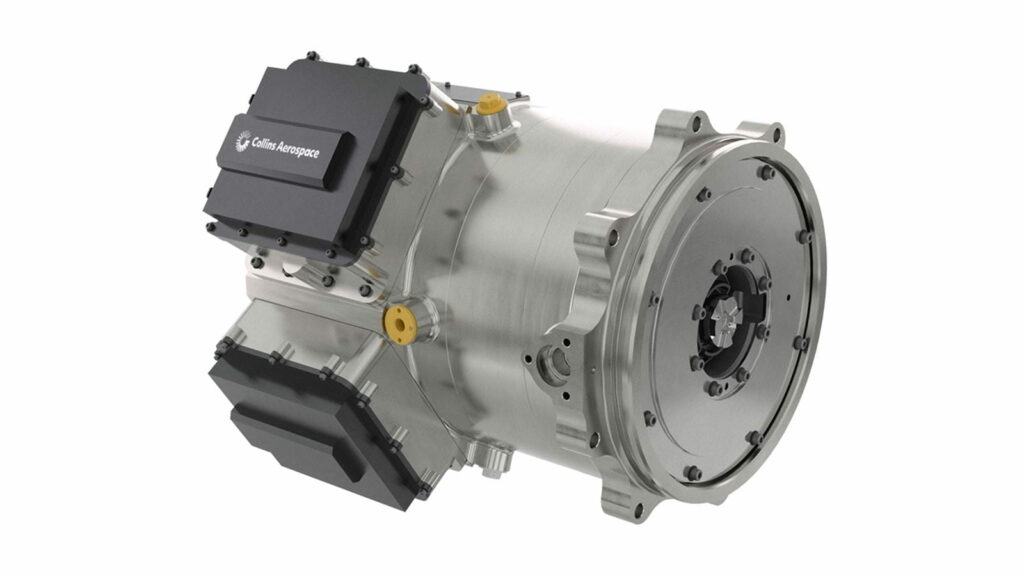Estimated reading time 5 minutes, 12 seconds.
Raytheon Technologies, parent company of Pratt & Whitney and Collins Aerospace, announced in late December 2022 that it has completed the first engine run of its regional hybrid-electric flight demonstrator — bringing the company one step closer to the flight-testing stage, which is slated to begin in Montreal in 2024.
In July 2021, Pratt & Whitney Canada (P&WC) announced it had begun working with airframe manufacturer De Havilland Aircraft of Canada Limited (DHC) to integrate hybrid-electric technology into a DHC Dash 8-100 flight demonstrator. The initiative is part of a C$163 million investment, supported by the governments of Canada and Quebec, to contribute to an industry-wide goal of net zero CO2 emissions and position Canada as an environmental leader in aviation.

P&WC said the initial run of the propulsion system took place at its Longueuil, Quebec, innovation facility, “and performed as expected.”
Jean Thomassin, executive director of new products and services at P&WC, shared: “With our ground test program now well underway, planned flight testing will enable us to accelerate the demonstration of this next generation sustainable propulsion technology as we continue to expand our collaboration within Canada’s aerospace ecosystem and beyond.”
The propulsion system integrates a 1-megawatt electric motor and motor controller (developed by Collins Aerospace) with a “highly efficient” Pratt & Whitney fuel-burning engine — which has been adapted for hybrid-electric operation. Collins developed the electric motor specifically for the hybrid-electric demonstrator project, and announced the completion of the preliminary design during the 2022 Farnborough International Airshow last July.
Swiss battery storage provider H55 has also joined the project, and is to supply the battery systems. The National Research Council of Canada and the Innovative Vehicle Institute will offer support on the development of battery component designs and associated electrical control systems. Moreover, Ricardo PLC is to support the project with component design, system integration, and testing.
Raytheon confirmed in December that it has chosen Cert Center Canada (3C) to lead the flight test program. The organization will modify and operate the Dash 8-100 demonstrator, and has assembled a Quebec team — including Chrono Aviation, WAAS Aerospace, and Elisen & associés — to integrate the hybrid-electric powertrain, battery system, and high voltage electrical harness into the research aircraft.

DHC, which will also support the integration of the propulsion system on the demonstrator, believes the Dash 8 is the right aircraft for the project, which will ultimately lead to lower costs for operators of the type.
“The robust and proven airframe of the Dash 8-100 provides a reliable platform to support the development of Pratt & Whitney Canada’s new hybrid-electric propulsion technology, and we anticipate that the technology will be scalable for operation on larger Dash 8 aircraft models as well,” said Dave Riggs, DHC’s chief transformation officer.
According to P&WC, the new powerplant technology being integrated into the Dash 8-100 demonstrator will enable the engine to achieve more efficient performance during take-off, climb, and cruise, resulting in a 30 percent reduction in fuel burn and CO2 emissions — compared to modern regional turboprops.
The engine OEM has acknowledged that such hybrid-electric propulsion technology is key to its sustainability strategy, and the company plans to continue to advance the efficiency of its portfolio of gas turbine engines.








